When galleries shut down, as they have done in recent years in the city, what happens next? Gallerists and the artists that they once represented talk to us about surviving the dip and continuing their art practice
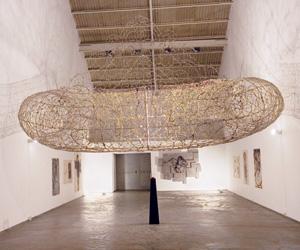
The first Indian artist that Abhay Maskara signed on for his gallery in 2008, a little before the bankruptcy of the Lehman Brothers, was T Venkanna. Maskara had been making studio visits on a short stay in Baroda earlier that year. "I still remember how it felt. I was exhausted at the end of those two days; a majority of the art I had seen wasn't uplifting. I had one last studio to visit. The artist told me he was sick but decided to meet me anyway when he got to know I was leaving the next day," Maskara recalls. In that tiny studio, he met 29-year-old Venkanna for the first time. Maskara describes the setting as one in which cupboards and corners were bursting at the seams with his drawings. "My enthusiasm was palpable.
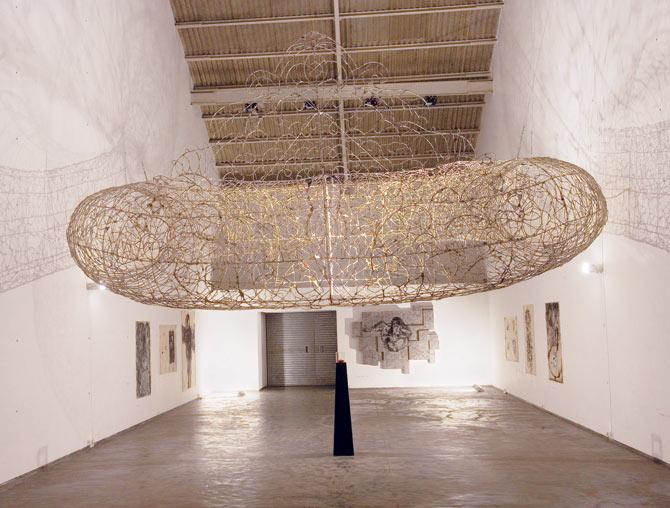
Artist T Venkanna's first exhibition, For Identity, at Gallery Maskara in 2009
I didn't ask him where he studied or how old he was - all that didn't matter. Venkanna was just showing work after work to me - no velvet gloves, not taking himself too seriously," Maskara continues. In early 2009, even after the global economic meltdown had brought the art market to its knees in India, Venkanna had his first solo exhibition in Gallery Maskara in Colaba. "It didn't matter if the art market wasn't ready. Venkanna was ready with a very strong body of work - and that's all that mattered," says Maskara.
The enthusiasm that Maskara had for Venkanna's practice nearly a decade ago has extended even after he shut down his gallery last year, following the demise of his father. Venkanna's latest solo, Looking for Peace, opened at Apollo Bunder's Sakshi Gallery earlier this month, where Maskara contributed a note (that appeared as wall text) and also walked visitors through the exhibition.
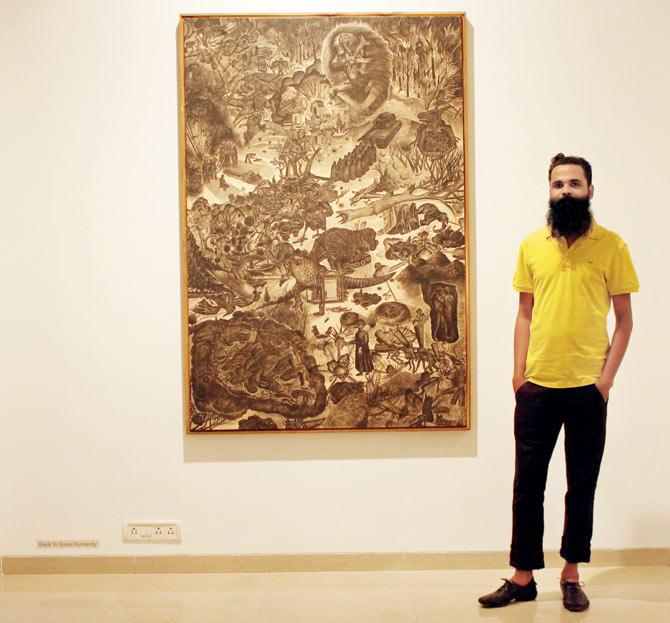
The artist with his recently-concluded exhibition, Looking For Peace, at Sakshi Gallery. Pics/Gallery Maskara & Sakshi Gallery
For Venkanna, this has meant bracing the changes in life and in his practice as an artist. His exhibition, which closed yesterday, was to be shown originally at Gallery Masakara in August 2016. When the gallery shut down, it meant that Venkanna had to wait, even edit his ever-growing series of works, and, find new representation. The afterlife of galleries is such: Every entity associated with it - gallerist, artist, staff, collector, and visitor - has to reconfigure the direction of their careers and vocations, but none so much as the artists who chose to be represented by a gallery. With both a space for exhibiting and selling gone, the artist grapples with a fundamental question of the survival of his/her practice.
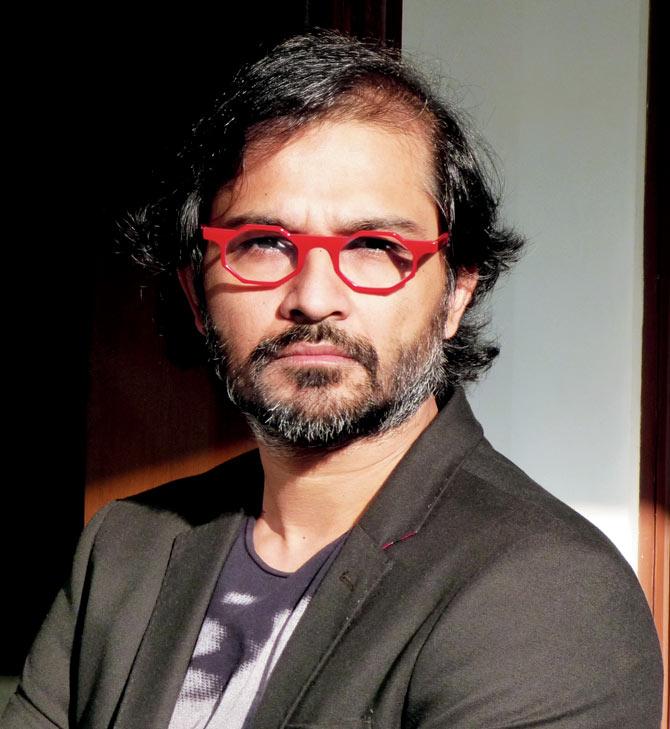
Abhay Maskara
Retracing paths
Galleries in Mumbai may represent anywhere between three to thirty artists. The shutting down of a gallery, therefore, even if for personal reasons, none of which may be related to the nascent market for contemporary art, sends a tremor across the art circle, say members of the fraternity. Sharmila Samant, an academic and artist whose work spans across mediums, says, "In India, one can estimate that 90 per cent of the artistic practice is dependent on galleries. There are very few artists whose work don't need the gallery model." Samant, who is based out of New Delhi, was represented by Lakeeren, which was housed in Colaba. Lakeeren shut down this year, after Dr Arshiya Lokhandwala decided to choose a more fluid approach, calling herself a nomadic curator. While Lokhandwala disinclined from commenting for this story, Samant says that, as an artist, she had opted out of the gallery model well-before Lakereen decided to bring down its shutters.
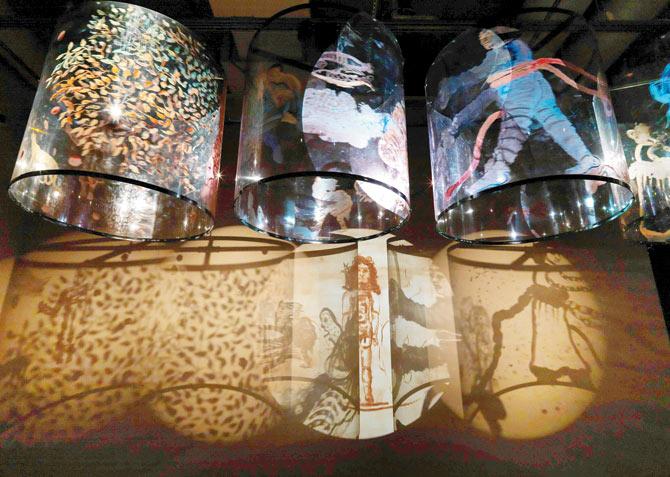
Gallerist Tushar Jiwarajka shut Volte Gallery's exhibition space, but continues to represent his artists, such as Nalini Malani, whose retrospective opened at Centre Pompidou recently. Pic/Philippe Migeat
The space that Lakeeren once occupied continues to support art as Sakshi Salon, a sister-space to Sakshi Gallery, its neighbour. Geetha Mehra, the seasoned gallerist who runs Sakshi, says that the salon is planned as an art-design space, but also as an extension of Sakshi itself. "I thought it might be nice to have more legroom and a space where we can experiment with art forms. Sakshi Salon has happened suddenly and the program is still evolving," says Mehra.
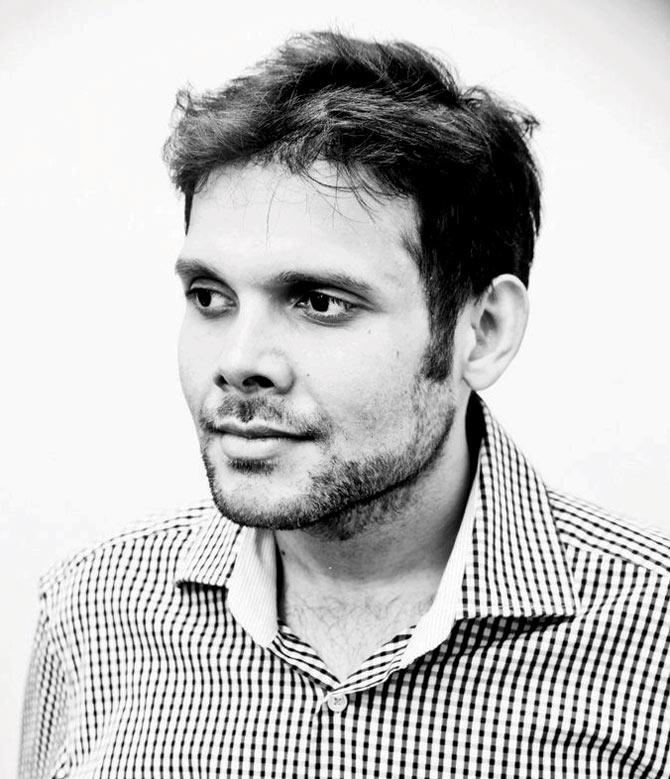
Tushar Jiwarajka
In the case of Priyanka Choudhary, a New Delhi-based multi-disciplinary artist, she has chosen not to seek a new gallery yet. Having shown with Maskara since 2010, she has been putting in more hours at her studio ever since the gallery closed. Her sculptures, installations and performances engage with spaces, such as her erstwhile studio-bungalow at Pamposh Enclave, a refugee colony in South Delhi. Through a collaboration with art philanthropy institution, The Foundation for Indian Contemporary Art (FICA), she invited about 15 artists to the bungalow to rethink the concept of a studio through workshops, talks and activities earlier this year.
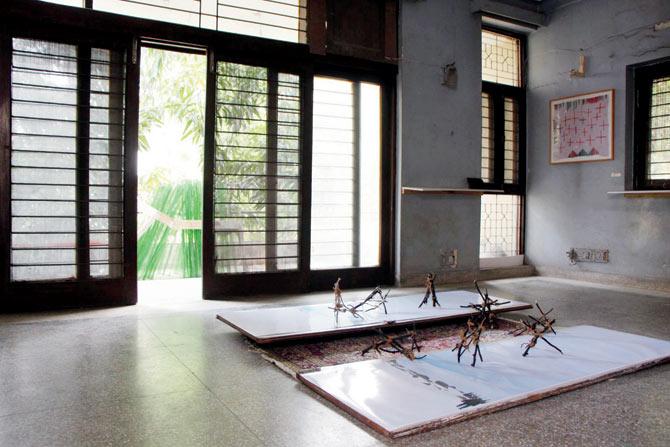
Artist Priyanka Choudhary's former studio in South Delhi, where she collaborated with FICA and invited artists to rethink the concept of a studio. Pics/Priyanka Choudhary
Letting go of this bungalow, for a newer studio in NOIDA, was hard for Choudhary. "There has been a lot of leaving - the gallery, the studio, the refugees," she says. Her current project involves travelling across Kashmir, and we can expect new work from her on these lines in the coming months.
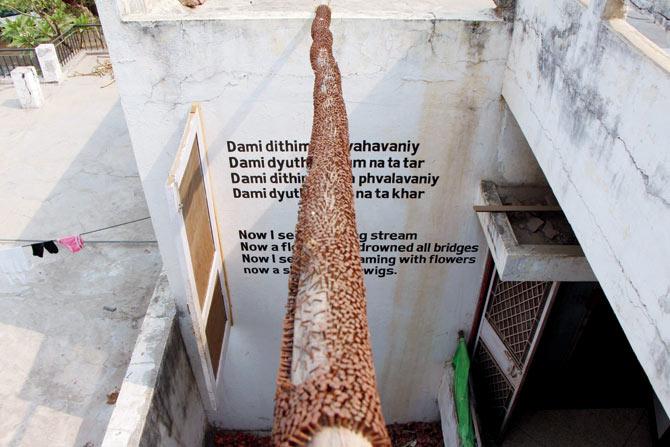
The Bodhi fall
The biggest hit came when the Goliath among galleries, Bodhi Art, shuttered. An establishment with branches in India and abroad, set up by entrepreneur Amit Judge, it evoked only the strongest of reactions - love or hate. There are those who say that it brought in the kind of professionalism and support for artists that was lacking among Indian galleries up until then. There are also those who blame Bodhi for escalating prices to the extent that when the market fell, it fell hard - on galleries, collectors and artists. Then are those who simply loved its extravagant after-parties. Art critic and curator Girish Shahane says that the impact of its closure in 2009 on the art environment was definitely negative. "A lot of people were left holding overpriced artworks and were so turned off that they never returned to look at or buy art," he says. And, what about the artists? "Some of them continued to flourish, while others did not - one cannot generalise about that. Judge could have shut down all but one or two branches, but I suppose he wasn't interested in the level of revenue that would accrue from such an operation in a scenario where prices for contemporary art had nosedived," he adds.
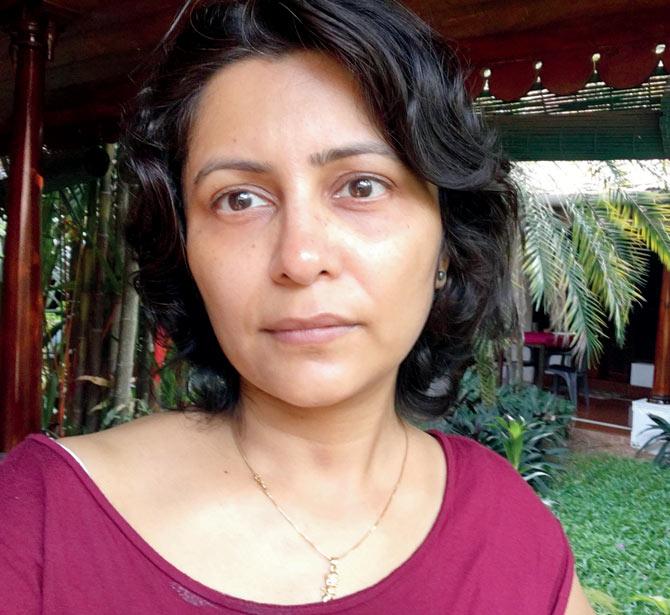
Priyanka Choudhary
Among the artists who probably suffered a blow from the shutdown is Nataraj Sharma, notable for his urban landscapes and figure studies, says Shahane. "Sharma had a series of four solo displays with Bodhi in 2007 and 2008, but has not had a solo since it shut. I don't know the details, but it seems likely that the closure of Bodhi Art and his leave of absence from solo exhibitions are related. It's a pity because he's a wonderful artist," he says.
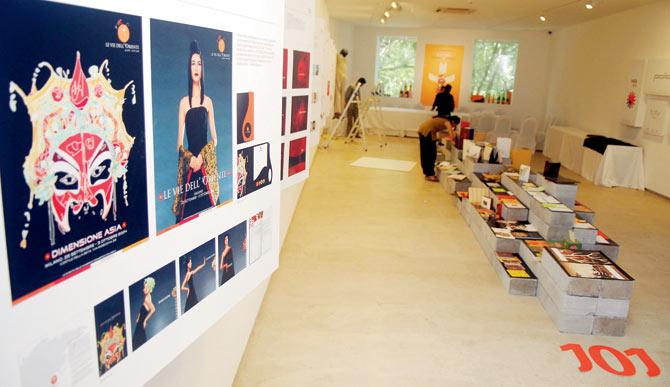
A Decade in Design, one of the last exhibitions to be shown at Bodhi Art, Mumbai
Higher and harder
An artist, who was once associated with Bodhi Art's branches in Mumbai, New Delhi, Singapore and Berlin during his practice mid-career, can testify to the hit he took when the gallery shut down. On the condition of anonymity, he says that Bodhi gave the honour and respect that artists deserved and was at par with international standards. "The questions you are posing are intense and personal, and right into the artist's survival," he says, before continuing, "We felt wonderful and appreciated with Bodhi Art. What also happened is that we became more ambitious, maybe too much for our own good. We even started calling our art as 'projects'.
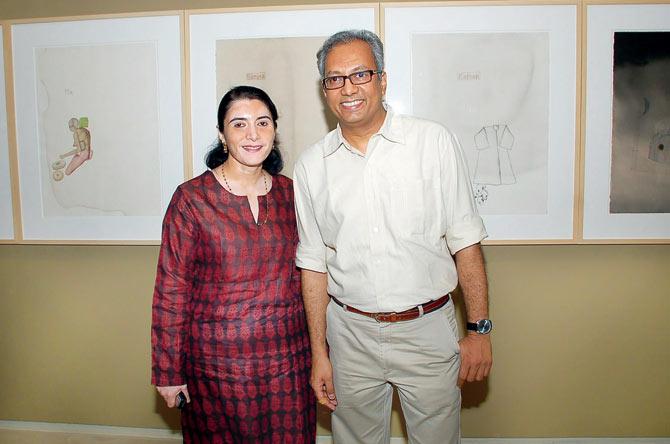
Bodhi Art's branches in New Delhi, Singapore, New York and Berlin shut down following the global meltdown in 2008. The Mumbai branch was the last to go. Seen here are artist-couple Anju and Atul Dodiya at Pale Ancestors, held at Bodhi Art, Mumbai in 2008
With the rise of India's stature in the global economy, it was a buoyant time for us, and we thought ourselves to be larger than we were. But, in fact, we were just pawns." Since the close of Bodhi Art, this artist has chosen to not align himself with other galleries, mostly because of the adage that one has got to be twice shy after being once bitten. "We were like birds, flying higher and higher until the arrow of economic recession hit us. The real tragedy was that the aspirations of younger artists were hit, some of them giving up their art practice altogether," he continues. Mid-career artists such as him, he explains, were able to sail through the collapse of the art market. In the last decade or so, this artist has been able to continue his studio work and sell his work to collectors. "I don't miss those inflated days. Not even the parties!"
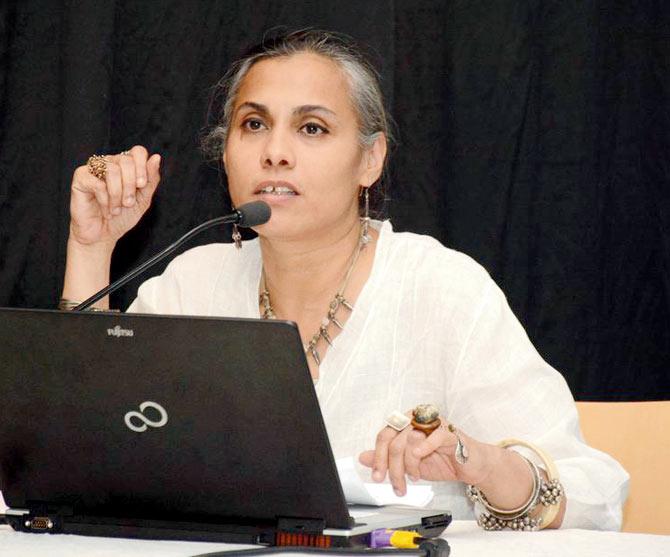
Sharmila Samant
Now, for the good news
Letting go is never easy, be it galleries or family, and the same is the case with Maskara. Having travelled and holidayed with Venkanna extensively, the change is only too real for him. "We have had to reconcile with the fact that some of those layers of associations are not going to remain but our friendship and intellectual discourse on art remain," he says. Some of the artists who were represented by him, such as Shine Shivan and Max Streicher, among others, have also found new gallery representations, which will be announced soon. The scenario is not as dismal as it seems. For instance, Volte Gallery, which Tushar Jiwarajka ran from 2009 to 2013, closed down its exhibition space, but continues to represent his artists and support their exhibitions here and abroad.
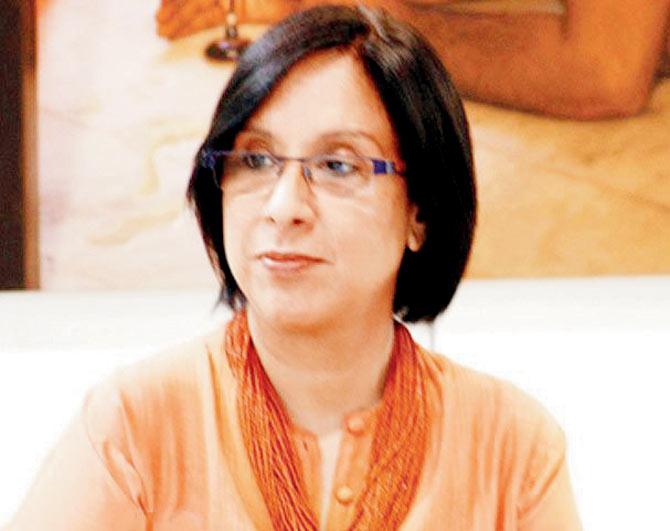
Geetha Mehra
"In a market economy it is natural for some businesses to thrive and others to fail. It's a pity when good galleries have to shut down, but it makes no sense to keep an enterprise going if it cannot sustain itself. The long-term trend in India remains of more galleries opening than shutting," says Shahane. In the recent past, there have been new galleries such as Tarq, Akara Art, and Gallery Isa opening in Colaba as well as Delhi Art Gallery's Mumbai branch.
Beyond the gallery
There will be those who will be quick to moralise that this is the survival of the fittest. Or, that it is a case of flourish or perish, based on talent, trends and connections. It may well be so, or where the benevolent gaze of Lady Luck falls, but there are changes that the art environment will certainly benefit from. Samant says that more institutional support, from non-profits and the government, towards the production and exhibition of art will help younger artists to sail through fluctuations in the market and art spaces.
Then, there are those who are able to dodge the needs of a gallery model altogether, or at least the brick-and-mortar or the white cube space - an alternative being explored abroad more than it is here. The New Yorker's recent look at the enfant terrible of the art world, Damien Hirst, who has been able to circumvent the gallery system and sell directly, and arrogantly, to collectors is such an example. The article, The False Narrative of Damien Hirst's Rise and Fall, goes on to cite that assessing the worth of Hirst in terms of sale figures and auction houses doesn't give an accurate picture, given the number of direct sales that he is making.
This could work in Mumbai, especially in a city where real estate comes at an extraordinary premium. "Galleries face not just high overheads related to their space but need to show at art fairs which greatly inflates costs. Many young artists are working in unconventional, non-gallery spaces, so what you suggest is already happening. Some have built followings on Instagram, others establish themselves through a combination of residencies and grants," says Shahane. As for now, Venkanna believes that he has found a gallery who believes in him, again. "It is important that a gallery nurtures you and your practice. A gallery shouldn't force you to continue a certain style only because it is selling or because it is the trend," he says.
Catch up on all the latest Mumbai news, current affairs from Mumbai, local news, crime news and breaking headlines here
Download the new mid-day Android and iOS apps to get updates on all the latest and trending stories on the go
 Subscribe today by clicking the link and stay updated with the latest news!" Click here!
Subscribe today by clicking the link and stay updated with the latest news!" Click here!









